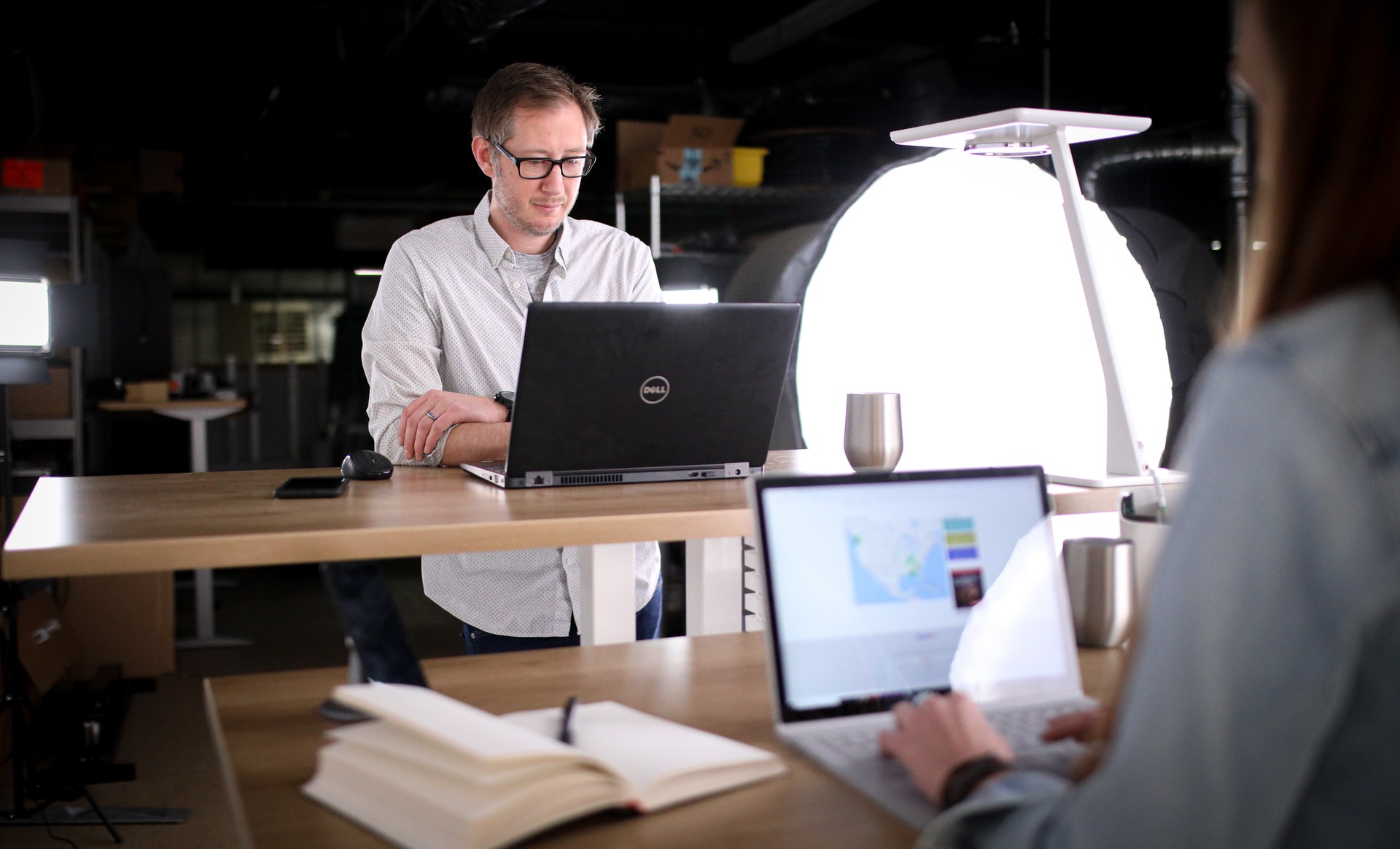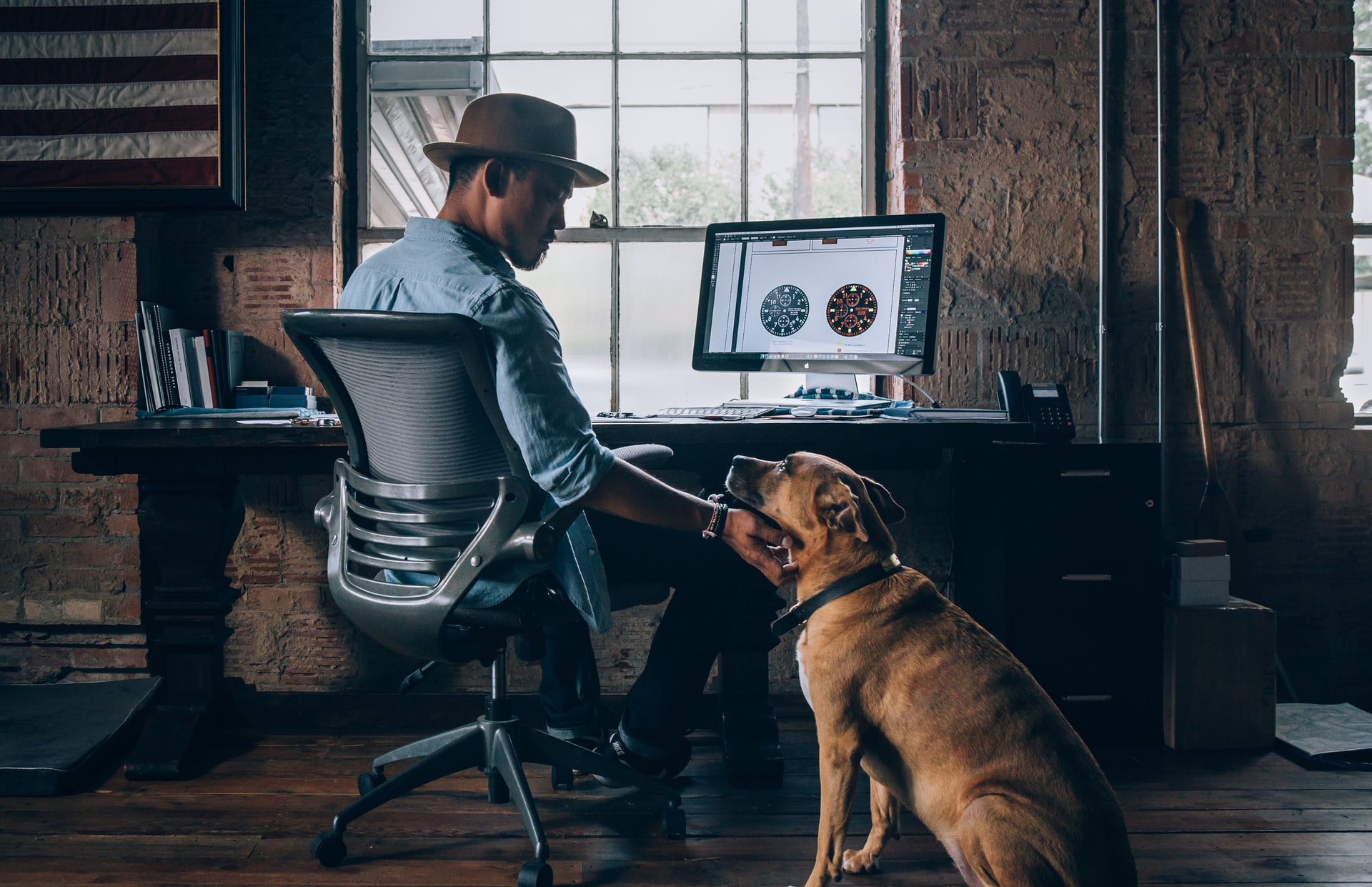15 wellness hacks for flexible workspaces to try out
The burnout crisis is real.
A recent study by Gallup revealed that 23% of workers experience burnout “very often” or “always”, and a further 44% experience it “sometimes”.
Lots of work and lifestyle-related things can cause chronic stress, which in turn leads to feeling burnt out. Examples include working too much, not having enough time for social activities and the absence of supportive relationships.
This is where coworking and flexible workspaces can really make a difference. For some of your members, you’re the closest thing they have to an HR department.
By offering wellness-focused perks and services, your members are more likely to feel supported and fulfilled and could be less likely to suffer from burnout.
Here are a few simple yet impactful wellbeing steps you could take in 2022.
1. Survey employees
Kickstart your wellness strategy with a quick member survey to find out what your members want, and what they think of any wellbeing activities you already have in place.
Getting members to rate statements can help you gauge people’s general feelings towards their own sense of wellbeing. Here’s an example question:
I feel comfortable in my work environment
1 - strongly agree | 5- strongly disagree
You could follow this with a question that elicits a more specific response. For example:
What could we do to make your working day more comfortable?
Wellbeing at work is also about feeling fulfilled. As a flexible workspace operator, you don’t have a lot of control over your members’ actual workload and activities, but you could provide them with opportunities for learning and development.
In your wellbeing survey ask members to what extent they feel as if they’re developing the necessary skills to achieve their career goals.
Could you invite expert speakers to run skills workshops in your space, or get business coaches in to deliver 1:1 sessions for your members at a discounted price?
2. Try white noise
Noise sensitivity can be incredibly stressful, and a workplace study by Oxford Economics has found that workers, above everything, want an office free of distractions.
This is difficult to achieve in an open plan coworking space, where people are on Zoom meetings at different times. Members who need to engage in focused work but can’t afford a private office can end up feeling distracted and stressed.
There are ways to mitigate unwanted noise, though. One way is to listen to white noise or nature sounds through noise-cancelling headphones. As well as blocking out the sound of people in meetings, it can help the listener feel more focused and creative.
Why not include this as a suggestion in your next newsletter?
3. Maximise natural light
A report by Human Spaces on biophilic design in the workplace found that those of us who are exposed to natural light at work have a 15% higher level of wellbeing than those of us who don’t.
Natural light can improve our ability to sleep at night, keep seasonal depression at bay and boost our vitamin D levels. Are you maximising natural light in your building?
If your space is devoid of natural light, you could explore circadian lighting. As humans, we’ve evolved to wake up at sunrise and go to sleep at sundown, and we’re impacted when our manufactured environments don’t reflect this.
Circadian lighting alters colour temperature throughout the day, emitting warmer tones that minimise blue light as the sun goes down at the end of the working day.
4. Think biophilic-ly
Natural light is part of biophilic design, a concept whose intention is to bring nature into the built environment. It can improve our sense of wellbeing by making us feel more connected to the natural environment in an age where we spend 90% of our time inside.
When you’ve got a few moments to spare, conduct a biophilic design audit. How many of the following biophilic design aspects are contained within your space…?
Plants
Natural light
Nature-inspired colour schemes
Sustainable materials
Nature sounds
Natural textures
Natural scents
Natural ventilation
Views of natural landscapes
Habitats and ecosystems (e.g. roof garden)
5. Encourage outdoor time
Take biophilia one step further and encourage your team and members to spend at least an hour a week outdoors. Being outside can have lots of positive effects. As well as reducing feelings of stress and anger, it can improve our physical health and wellbeing.
Add a social dimension by organising lunchtime walks in your local green space, or refer members to local park volunteer groups and green gyms. You could even set up your own!

6. Introduce stand-up hotdesks
Just as we’ve evolved to follow a circadian rhythm, our bodies are designed to move around throughout the day. This is difficult to achieve when you’re bound to a desk, but standing or sit-stand desks can encourage movement.
Standing is good for our balance and core strength and gets the blood flowing through our bodies. In other words, it contributes to our health and wellness.
If you’re interested in introducing standing desks to your space be sure to choose an adjustable, ergonomic option that your members can adjust. The user’s monitor should be at eye level and their arms should be bent at a 100-degree angle at their sides.
7. Facilitate yoga
Yoga teachers are flexible (in more ways than one) and many of them deliver sessions in workspaces as well as purpose-built yoga studios.
According to Harvard Health Publishing, “even at this early stage of research, a regular yoga practice appears to correlate with increased wellbeing, including better sleep, better body awareness, weight loss, and greater happiness.”
Depending on your wellness budget, you could subsidise yoga sessions for your members. If you’re able to get a large enough group together the teacher may even offer a discount.

8. Offer healthy snacks
We’re not suggesting you get rid of the biscuits but provide healthier alternatives too. There’s a variety of healthy foods you could offer aside from fruit (remember to check allergies).
Roasted pumpkin seeds are one option. They’re packed full of proteins, vitamins, minerals and antioxidants. Loaded with flavour and fibre, wasabi peas have more of a kick to them and can be perfect for alleviating that infamous afternoon slump.
Rice cakes are also ideal for snacking on and can be used as a vehicle for tasty spreads and butters. They come in a range of flavours these days and are low in calories.
9. Look after your community
Even the most independent among us want to be looked after from time to time. There are lots of subtle things you can do to show you care about your members’ wellbeing.
Encourage people to drink enough water throughout the day by keeping your water filters and jugs full. Make your breakout spaces inviting and comfortable, and include some non-business related reading material on the tables.
10. Signpost mental health services
Even if you’re not in the position to offer mental health services on-site, you can signpost your members and visitors to services and helplines. You could include posters and information leaflets in your toilet facilities and breakout spaces, for instance.
Signposting is the act of directing someone to services outside of your organisation. Workspaces are ideal environments for signposting people to mental health services. After all, we spend most of our waking hours at work.
11. Offer 24/7 access
Not everyone works best between the hours of 9 to 5, and others have life commitments that prevent them from doing so. Lots of coworking spaces already offer 24/7 access, but if yours doesn’t, now could be the time to consider it.
As long as you have the right access control in place, 24/7 hours can help people create a healthier work-life balance. It can work the other way too, of course with some members slipping into the unhealthy routine of working from early in the morning into the night.
12. Share the 20-20-20 rule
Although there’s no evidence that computer use harms our eyes or makes existing conditions worse, staring at a screen for hours can make them feel uncomfortable and tired.
Encourage your members to take frequent screen breaks to avoid tiredness and headaches. You might already have heard of the 20-20-20 rule. It suggests giving your eyes a 20-second (minimum) break every 20 minutes, looking at least 20 feet away.
You could also consider assessing your members’ equipment to make sure the height, quality and position of their screen are correct. Share this checklist from the HSE in your next newsletter. It’ll enable your members to carry out their own display screen equipment audit.
13. Don’t forget financial wellbeing
Financial wellbeing relates to our relationship with money and how much control we feel like we have over our finances. Money worries can affect both our mental and physical health and impact how we operate and perform at work.
Finance lunch-and-learns led by money coaches can be a great way to support members who require help with managing their money.
You can also signpost your members to relevant services. For instance, in the UK, people can get free, confidential and independent money and debt advice from the government’s Money and Pensions Service.

14. Consider becoming dog-friendly
Animals, particularly pets like dogs, are mood boosters. They can help alleviate stress, anxiety, and depression, reduce feelings of loneliness and encourage playfulness.
If you’re considering becoming pet-friendly this year, put together a pet policy, share it with your members and publish it on your website. Here’s a pet policy example from WeWork. It requires members to provide vaccination papers or service dog paperwork.
15. Be inclusive
One of the keys to wellbeing is to feel included and heard. This year, make IDEA (inclusivity, diversity, equitability and diversity) a priority. You can get the ball rolling by becoming a member of the Coworking IDEA Project and taking part in its monthly challenges.
According to the website:
“Colonialism, systemic racism, sexism and many other disparities in today’s society are predictably found within our industry, our events, and our communities as well…
…We are committed to re-centering the meaningful human connections, communal care and creative collaboration that coworking was founded upon, and we are committed to making the coworking industry more Inclusive, Diverse, Equitable and Accessible.”
Related posts
-
Global Coworking Trends and Opportunities for 2025
Now well into 2025, the coworking industry continues to demonstrate strong momentum. With demand for coworking spaces remaining steady around the globe, it's clear that coworking is not just enduring—it's thriving. Let’s explore the major trends and opportunities shaping the global coworking landscape this year.
-
Creating Events that Drive Community Engagement in Coworking Spaces
Community is everything in coworking, but a genuine sense of connection between members doesn’t magically happen overnight or by chance. Often, meaningful relationships take intentionality, effort, and time to build, with events being an effective vehicle for bringing people together around shared interests, goals, and experiences, creating opportunities for collaboration, and a thriving coworking culture. This article looks at creating events that drive community engagement in coworking spaces.
-
Liz Elam: ‘Community is the number one amenity in coworking spaces’
A household name in the global coworking industry, Liz Elam, is the founder of one of the world’s best coworking event series: GCUC. Liz’s coworking roots began in 2010, when she established Link Coworking – a welcoming, affordable, and professional coworking space – in her hometown of Austin, Texas. Link Coworking achieved incredible success, expanding across three locations and becoming the fourth-largest coworking brand in Austin. It was sold in 2019, making Liz the first woman globally to exit a coworking brand.
-
Key Takeaways from the Coworking Alliance Summit 2025
Gathering online for the Coworking Alliance Summit last week, members of global coworking alliances, coworking spaces, and community leaders came together to navigate global issues, strengthen ties across the coworking industry, and work collectively towards future goals.
-
5 Ways to Reduce Noise in Open Offices & Coworking Spaces
Some people like working against a background of noise, while for others it’s their worst work nightmare. The truth is, our relationship with noise depends on our own preferences and the nature of our work.
-
Key takeaways from the Workspace Design Show 2025
London’s Workspace Design Show is undoubtedly one of the best coworking events of 2025. For one, the exhibition (held at Islington’s Business Design Centre) features a host of innovative and creative workspace design solutions tailored to the needs of modern workplaces.